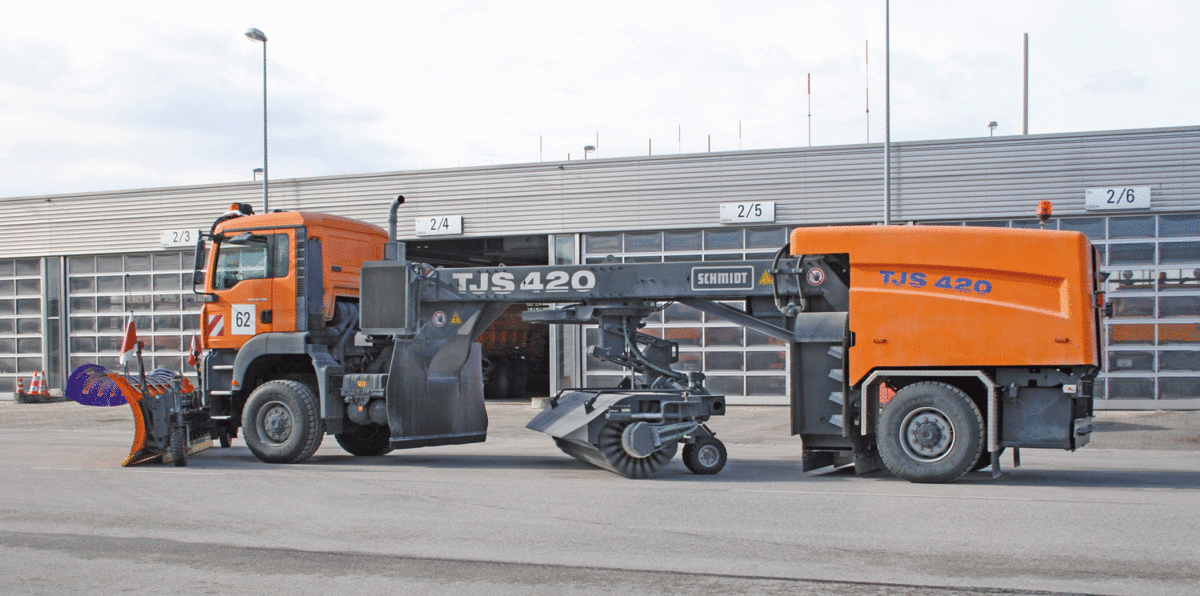Airport Jet Sweeper: New Generation
Performance meets design! The new TJS not only has been completely redesigned, but it has been also increased the ease of maintenance, we integrated a new EuroMot4 auxiliary engine and the adaptation to new Euro 6 vehicles was made. A better accessibility to battery, hydraulic, or other internal components was an important part of new series, too. In addition, a new fan system now almost completely prevents fine snow particles from being drawn in.
The TJS und TJS-C jet sweepers are designed for clearing snow from airport runways and taxiways. They are characterised by their extra large clearing width, high operating speed and excellent manoeuvrability.
Combined clearing
The jet sweepers clear the airport service areas in three steps. First the snow plough pushes the snow aside. Then the rotary brush sweeps the remaining snow and ice aside. Finally, the hydraulically operated blower generates an intensive air flow. This is emitted directly above the ground in front of the wheels of the rear vehicle to blow the remaining snow and liquid aside with high pressure. The jet sweepers reach a maximum clearing speed of 60 km/h, depending on the level and density of snow.
Construction and technology
The jet sweepers are available as towed machines (TJS) or as compact units (TJS-C). The towed TJS jet sweepers are comprised of three components: the towing vehicle, the supporting frame and the rear vehicle. The all-wheel-driven towing vehicle accommodates the front-mounted snow plough. The connecting unit is located at the front end of the supporting frame. This establishes the connection to the towing vehicle. Two coupling systems allow for two machine variants: semitrailer and trailer.
The TJS-C jet sweepers are comprised of a power unit, a supporting frame and a rear vehicle, which form a compact solid unit together. The front-mounted snow plough is attached to the power unit. Both in the TJS and the TJS-C variants, the hydraulically operated rotary brush is attached to the underside of the supporting frame. The rotary brush is locked in lengthwise position during transit. The rotary brush and the blower unit can be synchronously set to transit and working position from the driver’s cab at the push of a button. Both the blower unit and the drive motor for the blower unit and the rotary brush are located in the rear vehicle.
Full output
The sweepers can be used on their own or in combination with other jet sweepers. The rear axle steering with the automatic track control guarantees a high degree of manoeuvrability. The hydraulically controlled double castor wheels consistently regulated the automatic stepless sweeping level adjustment of the rotary brush. The rotary brush is suspended in such a way that it lies on the surface to be cleared independently of the vehicle’s movement or ground unevenness. The rotational speed of the brush is automatically adjusted to the driving speed during the operation. The actual rotational speed of the brush is shown on the display of the control panel. The long service life of the brush is guaranteed together with a wear-dependent rotational speed adjustment.


